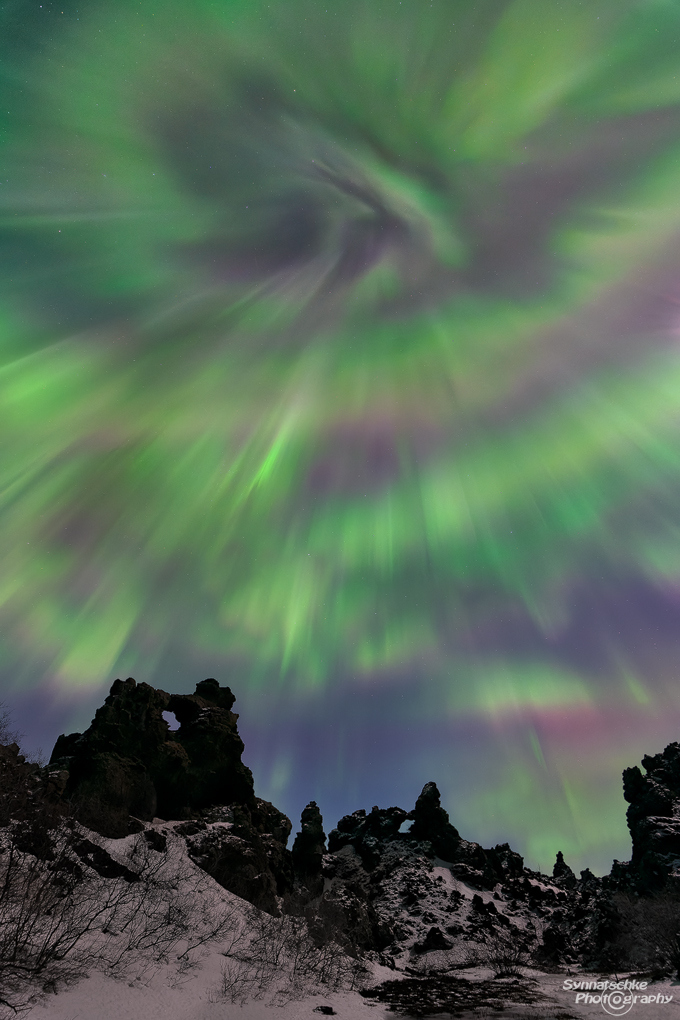
COSMIC RAIN SHOWER
Whenever the Aurora Borealis lights up the night and starts dancing across the sky, it is not easy to stay focused on photography. It gets even worse as soon as the green bow moves towards the "highest point" on the celestial sphere and then - all of a sudden - bursts. You really feel immobilized seeing all those colorful curtains of light falling right down on you from above. That's when we always had a hard time deciding whether to try to capture a small part of what was going on or simply just stand there in awe and enjoy these incredible and brief moments of time.
Such an "explosion" is commonly referred to as "northern lights corona" and it is a rather difficult subject to photograph. Not just for being so mind-blowing, but also because on most occasions it lasts but a few seconds. So chances are pretty high that your camera is still engaged with other shots and pointed in the wrong direction. But on March 13/14 we managed to capture two close-ups from the corona and two more images including the surroundings. All this magic took place within less than a 1-minute timeframe. And a couple of minutes later the swirls were again closer to the horizon, that's when we took last month's image (-> "Aurora at Dimmuborgir"). What an incredible night!
And there is also always a lot of luck involved: A "cosmic rain shower" like the one shown here only happens on rare occasions when the northern lights are very active. Curving and curling bows might also be observed during periods of lower solar activity, but the odds for a rapidly pulsating and flower-shaped "corona" are higher with a 3-hour planetary Kp index of 5 or more - even in northern Iceland near the Arctic Circle.
For now, this was the most intense auroral display we've ever had with a definite Kp index of 6,33 (Kp index database).
Please stay tuned, more northern lights images will be coming up soon.
Image data: 6 s at f/5, ISO 1000; Canon 16-35 mm 1:4 L IS USM at 16 mm, Sony Alpha 7RII w/ Metabones IV adapter
